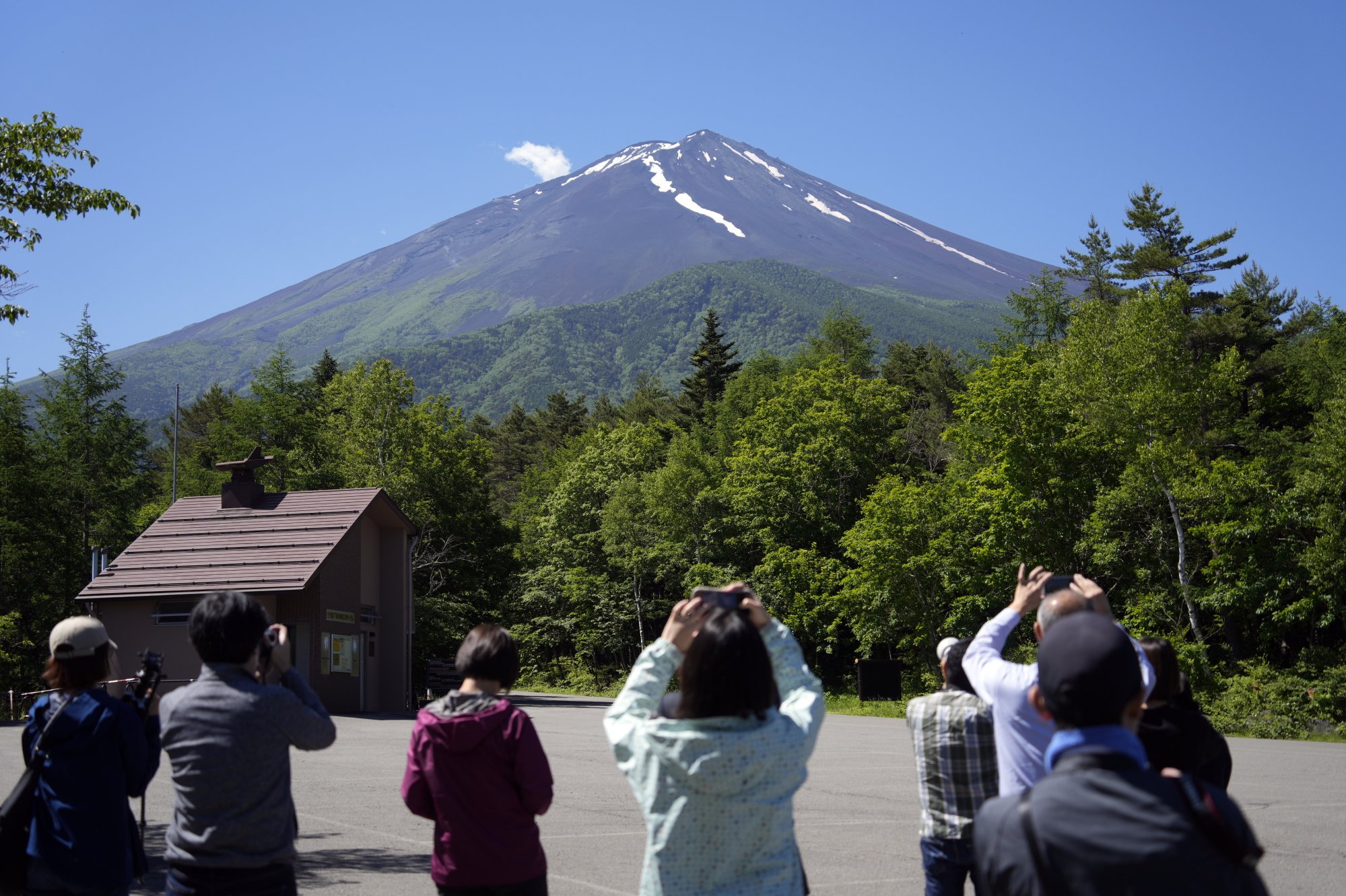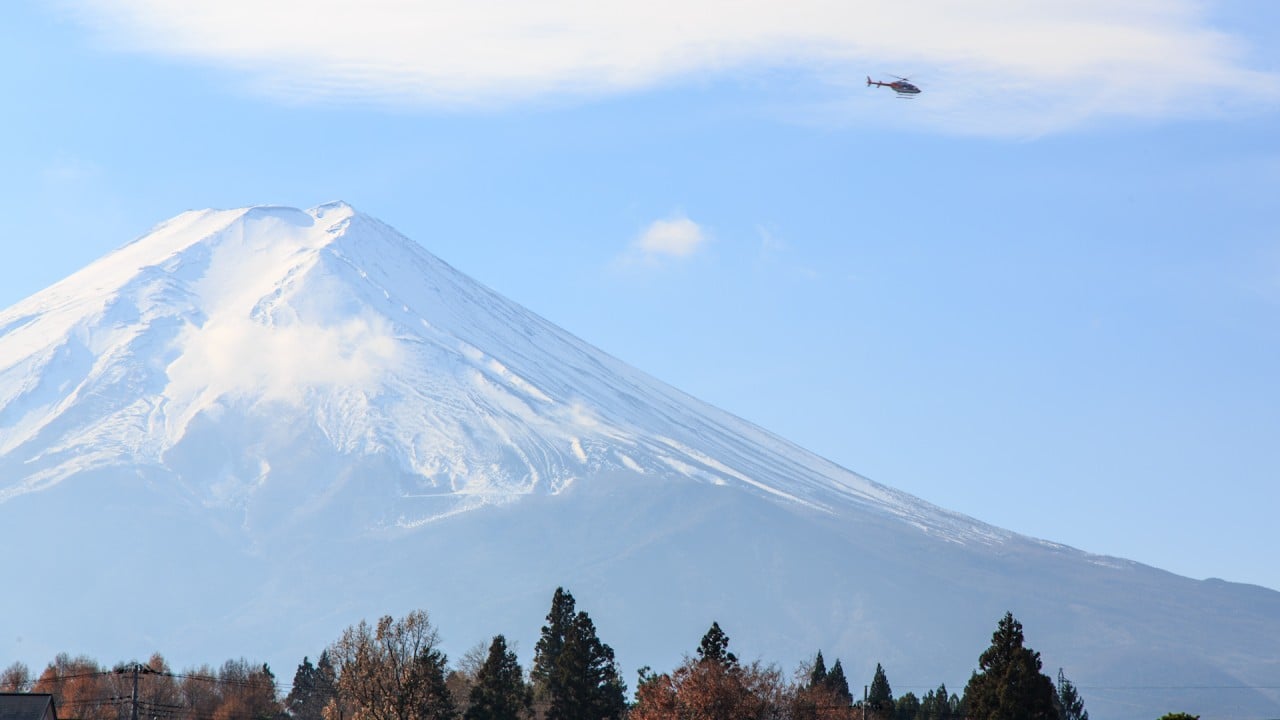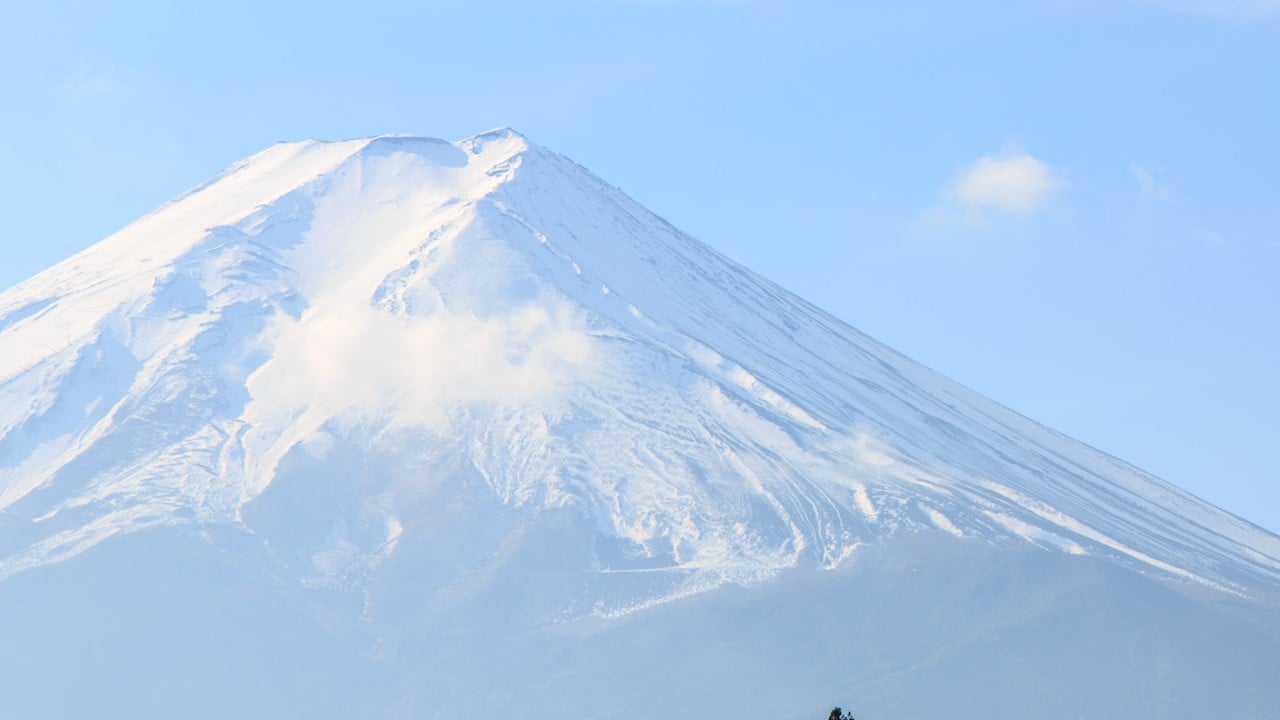A Hong Kong hiker lost consciousness while climbing Mount Fuji in Japan on Tuesday and was pronounced dead a day later – the fifth fatality on the mountain in less than two weeks.
The civil servant, 58, and his wife started their ascent on the Yoshida Trail at about 1.30pm, but he became unwell and fainted at about 8.30pm.
Japanese media said the man was well-equipped with mountaineering gear for the hike.
For those interested in overseas hiking, the Post answers a few key questions.
1. How popular is Mount Fuji as a holiday destination?
Mount Fuji is a volcano regarded as a national symbol of Japan. Its image appears on travel agency websites, postcards and paintings.
Official figures show it attracts more than 300,000 climbers a year during the climbing season from July to August.
The mountain is so popular among hikers that authorities recently set a daily quota of 4,000 visitors, with an entry fee of 2,000 yen (US$12) a head.
Hikers without reservations cannot enter the Yoshida Trail – the simplest of the four routes – between 4pm and 3am the next day.
2. How dangerous is it to climb Mount Fuji?
The dead hiker, identified as Lawrence Wong in reports, was the first fatality since the mountain opened its trails for the season on July 1.
Days ahead of the hiking season, on June 27, at least one individual died climbing Mount Fuji, with three more bodies later found near its crater, police said.
Among them was professional rock climber Keita Kurakami. He was an ambassador for the outdoor clothing brand Patagonia, which posted about his death on social media two days later.
There were 97 people involved in accidents on Mount Fuji last year, up from 63 in 2022.
Environmental authorities in Yamanashi and Shizuoka prefectures said altitude sickness and hypothermia were the most common reasons for people abandoning climbs.
They said hikers should look out for stormy weather, rockfalls, and slip drops at craters and valleys.
3. What are some other popular overseas hiking destinations for Hongkongers?
Hong Kong-based online travel agency Klook said day trips to Mount Fuji could cost as little as HK$210 (US$27).
Journeys to the peak of Mount Batur in Bali in Indonesia are also available for about HK$120 and a 16-hour trip to Mount Bromo in Java, also Indonesia, costs HK$100.
Other popular destinations are Mount Hehuan in Taiwan, the Katla volcano in Iceland, the Grand Canyon in Arizona and Yosemite National Park in California, both in the US.

4. How should people prepare themselves for overseas mountain hikes?
Chung Kin-man, a veteran mountaineer, said the trip up Mount Fuji was “not difficult” but could take a significant amount of time and involve a stay in mountain huts.
He advised Hongkongers who wanted to visit the mountain to check their health and consult their doctors on whether they could handle high altitudes.
“Altitude sickness hits everyone at a different speed and the body needs time to adapt,” he explained. “If they start feeling symptoms like headaches, nausea or shortness of breath, they should inform their fellow hikers and rest.”
John Tsang Chi-sing, another veteran climber, said that as Mount Fuji was three times higher than Hong Kong’s tallest mountain, Tai Mo Shan, Hongkongers who wanted to climb the Japanese volcano should first condition themselves by hiking in the city or attempting lower overseas peaks.
He added people should also understand how their bodies might react to high-altitude environments before going on hiking trips.
5. How can people get help in an emergency on an overseas hike?
The emergency services numbers in Japan are 110 for police and 119 for fire and ambulance.
People on the Yoshida Trail can also call the management centre’s 24-hour hotline at 0555-72-1477.
The nationwide emergency number in the United States is 911.
The same number is used in Argentina, Canada, the Dominican Republic, Jordan, Mexico, Pakistan, Palau, Panama, the Philippines, Sint Maarten and Uruguay.
Hongkongers overseas can get help through the 24-hour Immigration Department hotline at (852) 1868 or by messaging 1868 using WhatsApp or WeChat while in mainland China or overseas.
6. What are some examples of poor hiking practices that have sparked discussion?
Hikers’ poor choice of clothing and equipment and lack of preparation earlier gained attention and drawn online criticism.
In a Facebook post that went viral last November, one Hong Kong user said he had met a woman hiker from the mainland who had brought no water, torches, jackets or maps as she tried to climb Lantau Peak, the city’s second-highest mountain.
The woman, said to be “wearing fancy shoes and carrying a handbag”, told the Facebook user she had consulted a guidebook that said Lantau Peak was an easy trail and refused advice to abandon the hike.
“I’ve seen many people from mainland China wearing high-heeled shoes for hiking,” another commentator said. “It poses an unnecessary challenge and pushes the limits of the human body.”
A woman in Canada complained that she had sprained her foot after she was abandoned by friends during a hike on Coliseum Mountain in Alberta in 2019.
It was later discovered that she had worn high heels and jeans during the attempt to climb the 2,035 metre (6,677 feet) mountain.



